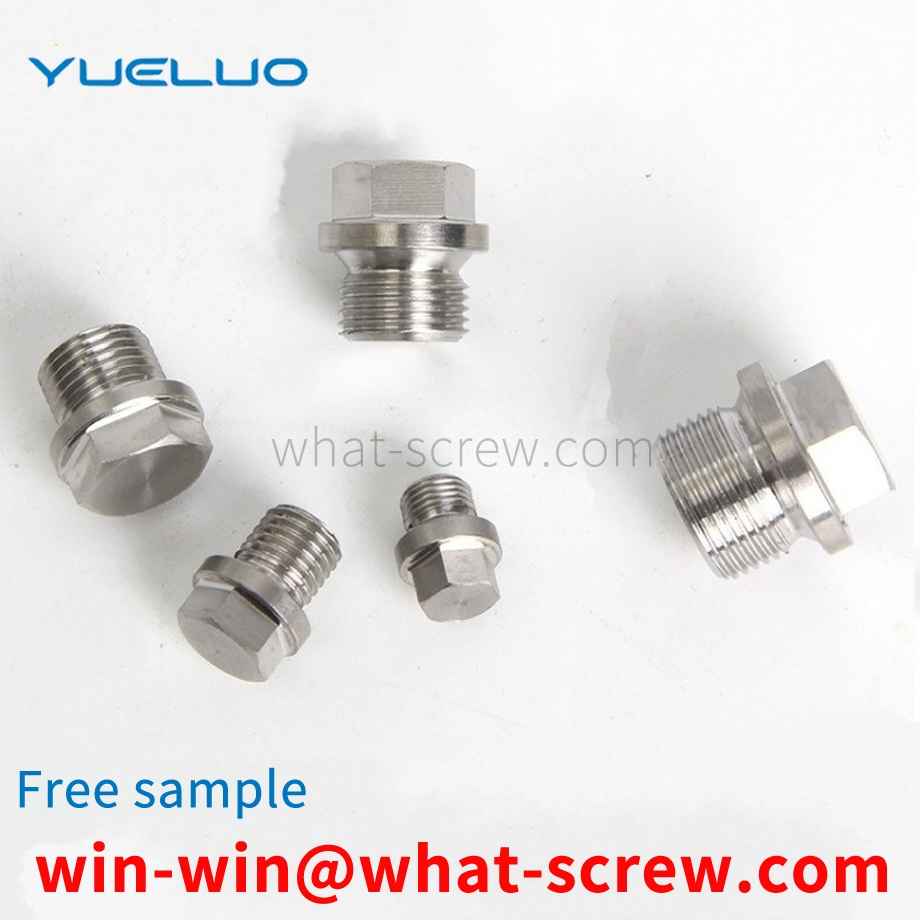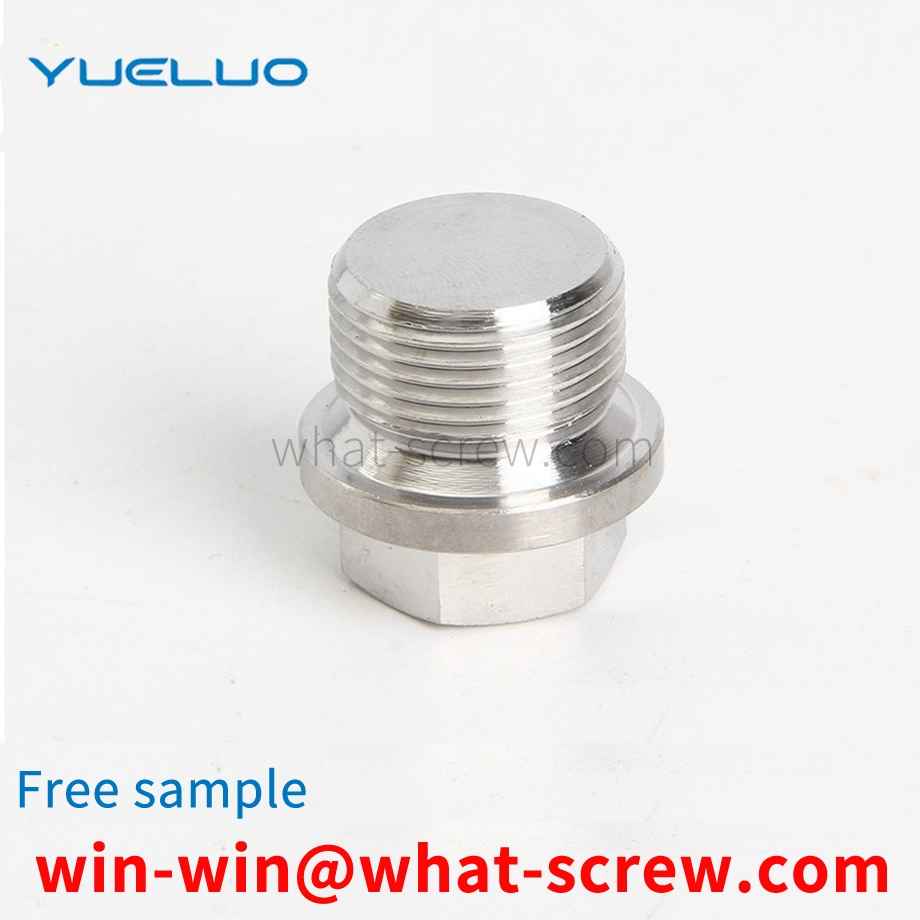Fasteners are a type of mechanical parts that are used for fastening connections and are widely used. Fasteners are used in a wide range of industries, including energy, electronics, electrical appliances, machinery, chemicals, metallurgy, molds, hydraulics, etc., in various machinery, equipment, vehicles, ships, railways, bridges, buildings, structures, tools, instruments, etc. , chemical industry, instruments and supplies, etc., all kinds of fasteners can be seen, which are the most widely used mechanical basic parts. It is characterized by a wide variety of specifications, different performance uses, and a very high degree of standardization, serialization and generalization. Therefore, some people also refer to a type of fasteners with existing national standards as standard fasteners, or simply as standard parts.
The profile of the American National thread (60 profile angle and H/8 flatness) is different from the Wyeth thread profile (55 profile angle and H/6 flattening height). American National Thread is widely used in regions and industries that are influenced by American industry. In World War II, due to the inconsistent thread standards used by the Allies, the logistical supply difficulties caused serious economic losses and casualties to the Allies. Immediately after the end of World War II, the United States, the United Kingdom, Canada and other allies immediately began to formulate a unified thread standard among allied countries, and promulgated a unified thread standard in 1948. Because the economic strength and military strength of the United States dominated the Allied forces at that time, the unified thread was mainly formulated according to the national thread standard of the United States. Unity; the latter letter N is derived from the N designation for American National Threads. Since then, the unified thread began to squeeze the original use market of the British Whitworth thread.
flat washer is also called a flat washer. It is mainly stamped out of an iron plate. The shape is generally a flat washer with a hole in the middle. The size of this hole is generally determined according to customer requirements. There are 9 standards for flat washers in my country. From 2000 to 2002, GB/T97.3-2000, GB/T5286-2001, GB/T95-2002, GB/T96.1-2002, GB/T96.2 were approved and released respectively. -2002, GB/T97.1-2002, GB/T97.2-2002, GB/T97.4-2002 and GB/T5287-2002 Standard for flat washers. According to the performance grade of the flat washer, the author recommends the use of materials: ST12, ST13, Q235, Q215, Q195, etc. can be selected for the 100HV grade, and the surface hardness can reach about 110HV; 08F, 08Al, 10, 10F, etc. can be selected for the 140HV grade etc., the surface hardness can reach about 140HV; for 200HV and 300HV grades, 45, 50, 60, 70 or 65Mn steel should be selected, which can be quenched and tempered by heat treatment to meet the technical requirements of 200~300HV and 300~400HV. Because according to the standard, flat washers of 100HV and 140HV grades can be manufactured from mild steel. Most enterprises use Baosteel materials when selecting materials, which is convenient for cold stamping. The following is a brief description of Baosteel's standards. Compared with the BZJ407-1999 standard, there are major changes in Continuous Cold Rolled Low-Carbon Steel Plates and Strips and the enterprise standard: (1) The grades have been revised and integrated, and the grades have been changed from 8 commonly used to 5. St12 is changed to DC01; ST13 is changed to DC03; St14, St15 is changed to DC04; BSC2 is changed to DC05; St16, St14-T, BSC3 is changed to DC06. (2) The surface quality level is changed from two to three: the higher-level finishing surface (FB), the surface is allowed to have a small amount of defects that do not affect the formability and coating and plating adhesion, such as slight scratches, indentations, Pock, roll printing and oxidation color, etc. Premium Finished Surface (FC) products have no visible defects on the better of the two sides and must meet at least FB requirements on the other side. The super-advanced finishing (FD) product must not have any defects on the better side of the two sides, that is, it cannot affect the appearance quality after painting or the appearance quality after electroplating, and the other side must at least meet the requirements of FB. (3) The surface structure is modified from four to two, and the control value of surface roughness is increased. The average roughness Ra when the surface structure is pitted (D) is 0.6 μm. (4) The provisions on Si and residual elements in the chemical composition of the five grades have been cancelled, and the contents of elements such as C, S, and Alt have been revised.
Metric threads are measured in MM (millimeters) and have a cusp angle of 60 degrees. Both US and Imperial threads are measured in inches. The cusp angle of the American thread is also 60 degrees, while the cusp angle of the imperial thread is 55 degrees. Due to the different units of measurement, the representation methods of various threads are also different. For example, M16-2X60 represents a metric thread. His specific meaning is that the nominal diameter of the screw is 16MM, the pitch is 2MM, and the length is 60MM. Another example: 1/4—20X3/4 means the inch thread, what he specifically means is the nominal diameter of the screw It is 1/4 inch (one inch = 25.4MM), there are 20 teeth on one inch, and the length is 3/4 inch. In addition, if you want to express American screws, UNC and UNF are usually added to the back of the British screws to distinguish between American coarse teeth or American fine teeth. In the usual domestic sales business, the most common standards we encounter are GB (National Standard) and DIN (German Standard). In the production of Yaoda, the following standards are mainly encountered: GB30; GB5783; GB5782; GB52; GB6170; GB818; GB819; GB845; GB846; GB70; DIN912; DIN933; It has been replaced by GB5783 (new national standard). GB52 (old national standard) has been replaced by GB6170 (new national standard) in the standard book.
Each self-tapping screw is composed of three parts: the head, the shank and the end of the shank. The composition of each self-tapping screw has four major elements: head shape, wrenching method, thread type, and end form. 1. Head Shapes There are various head shapes. There are round head (semi-round head), flat round head, round head flange (with pad), flat round head flange (with pad), pan head, pan head flange (with pad), countersunk head, semi-countersunk head, Cylinder head, spherical cylinder head, horn head, hexagonal head, hexagonal flange head, hexagonal flange (with pad) head, etc. 2. Wrenching method The wrenching method refers to the way of twisting the head of the screw when installing and tightening the screw. There are two basic methods: external wrench and internal wrench. Generally speaking, external wrenching will allow more torque than any form of internal wrench (internal groove). External wrench: hexagon, hexagonal flange surface, hexagonal flange, hexagonal flower shape, etc.; internal wrench: flat groove, cross groove H type, cross groove Z type, cross groove F type, square groove, compound groove, inner flower Key, inner hexagon flower, inner triangle, inner hexagon, inner 12 corner, clutch slot, six-blade slot, high torque cross slot, etc. 3. There are many types of threads, including self-tapping threads (wide thread), machine threads (ordinary threads), drywall screw threads, fiberboard screw threads, and some other special threads. In addition, threads can be divided into single-lead (single-end), double-lead (double-end), multi-lead (multiple-end) and high-low thread double-end threads. 4. Terminal form There are two main types of terminal form: tapered end and flat end. However, according to the needs of use, at the screw-in part of the end, grooves, grooves, incisions or parts with a similar drill shape can be processed with cutting function. In some standards, it is also a tapered end or a flat end, and there are different forms such as a rounded end.
We have many years of experience in the production and sales of screws, nuts, flat washers, etc. The main products are: set combination flat spring washer nuts, hardware rigging rings, solid trademark rivets, welding studs and other products, we can provide you with suitable products Your fastener solution.



















 Service Hotline
Service Hotline




